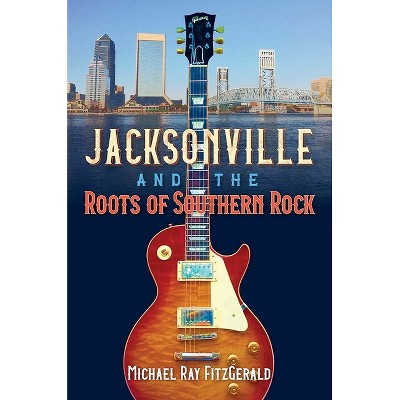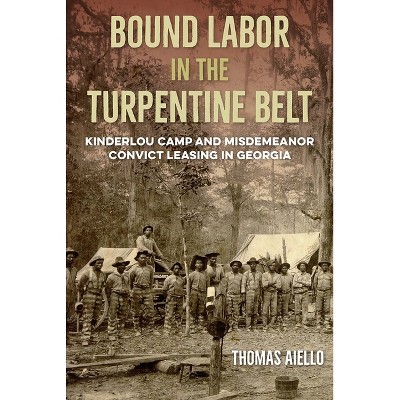Sponsored

Jacksonville - (Florida History and Culture) by James B Crooks (Paperback)
$15.67Save $9.28 (37% off)
In Stock
Eligible for registries and wish lists
Sponsored
About this item
Highlights
- In the 1950s and '60s Jacksonville faced daunting problems.
- About the Author: James B. Crooks, emeritus professor of history at the University of North Florida, is the author of Jacksonville After the Fire, 1901-1919: A New South City and Politics and Progress: The Rise of Urban Progressivism in Baltimore.
- 296 Pages
- History, United States
- Series Name: Florida History and Culture
Description
About the Book
The decision to consolidate with surrounding Duval County began the transformation of this conservative, Deep South, backwater city into a prosperous, mainstream metropolis.Book Synopsis
In the 1950s and '60s Jacksonville faced daunting problems. Critics described city government as boss-ridden, expensive, and corrupt. African Americans challenged racial segregation, and public high schools were disaccredited. The St. Johns River and its tributaries were heavily polluted. Downtown development had succumbed to suburban sprawl. Consolidation, endorsed by an almost two-to-one majority in 1967, became the catalyst for change. The city's decision to consolidate with surrounding Duval County began the transformation of this conservative, Deep South, backwater city into a prosperous, mainstream metropolis. James B. Crooks introduces readers to preconsolidation Jacksonville and then focuses on three major issues that confronted the expanded city: racial relations, environmental pollution, and the revitalization of downtown. He shows the successes and setbacks of four mayors--Hans G. Tanzler, Jake Godbold, Tommy Hazouri, and Ed Austin--in responding to these issues. He also compares Jacksonville's experience with that of another Florida metropolis, Tampa, which in 1967 decided against consolidation with surrounding Hillsborough County. Consolidation has not been a panacea for all the city's ills, Crooks concludes. Yet the city emerges in the 21st century with increased support for art and education, new economic initiatives, substantial achievements in downtown renewal, and laudable efforts to improve race relations and address environmental problems. Readers familiar with Jacksonville over the last 40 years will recognize events like the St. Johns River cleanup, the building of the Jacksonville Landing, the ending of odor pollution, and the arrival of the Jaguars NFL franchise. During the administration of Mayor Hazouri from 1987 to 1991, Crooks was Jacksonville historian-in-residence at City Hall. Combining observations from this period with extensive interviews and documents (including a cache of files from the mezzanine of the old City Hall parking garage that contained 44 cabinets of letters, memos, and reports), he has written an urban history that will fascinate scholars of politics and governmental reform as well as residents of the First Coast city. A volume in the Florida History and Culture Series, edited by Raymond Arsenault and Gary R. MorminoReview Quotes
"A well-crafted case study of urban rebirth in the South. . . . Balanced and thoughtful."--Choice "A brilliant narrative that explains how the city has grown from a small cow town on the narrowest portion of the St. Johns River to a major metropolis in the sun belt."--H-Net "Crooks, the historian-in-residence during the administration of Jacksonville mayor Tommy Hazouri (1987-1991), was in an excellent position to observe community development at close range. His experiences and insights are quite evident in this solidly researched study."--Journal of American History "A reminder of just how backward a city Jacksonville was in many ways in the 1950s and 1960s."--Florida Times-Union "Particularly useful for its examination of how blacks viewed their prospects in this 'Bold New City' and how civil rights activists pressed their claims within the new consolidated government. . . . A primer for those concerned about southern growth in the twenty-first century."--Journal of Southern History "In 1967, voters in Jacksonville and the suburban areas of Duval County supported a successful city-county consolidation that transformed Jacksonville into Florida's largest city. James Crook's detailed study of Jacksonville before and after the consolidation provides a wealth of information and insight about the community."--Florida Historical Quarterly
About the Author
James B. Crooks, emeritus professor of history at the University of North Florida, is the author of Jacksonville After the Fire, 1901-1919: A New South City and Politics and Progress: The Rise of Urban Progressivism in Baltimore.Dimensions (Overall): 9.0 Inches (H) x 6.0 Inches (W) x .67 Inches (D)
Weight: .96 Pounds
Suggested Age: 22 Years and Up
Number of Pages: 296
Series Title: Florida History and Culture
Genre: History
Sub-Genre: United States
Publisher: University Press of Florida
Theme: State & Local
Format: Paperback
Author: James B Crooks
Language: English
Street Date: August 20, 2019
TCIN: 91095146
UPC: 9780813064369
Item Number (DPCI): 247-31-1996
Origin: Made in the USA or Imported
If the item details aren’t accurate or complete, we want to know about it.
Shipping details
Estimated ship dimensions: 0.67 inches length x 6 inches width x 9 inches height
Estimated ship weight: 0.96 pounds
We regret that this item cannot be shipped to PO Boxes.
This item cannot be shipped to the following locations: American Samoa (see also separate entry under AS), Guam (see also separate entry under GU), Northern Mariana Islands, Puerto Rico (see also separate entry under PR), United States Minor Outlying Islands, Virgin Islands, U.S., APO/FPO
Return details
This item can be returned to any Target store or Target.com.
This item must be returned within 90 days of the date it was purchased in store, shipped, delivered by a Shipt shopper, or made ready for pickup.
See the return policy for complete information.
Trending Non-Fiction

$15.68
Buy 2, get 1 free select books
4.7 out of 5 stars with 182 ratings

$19.31
was $20.98 New lower price
Buy 2, get 1 free select books
4.1 out of 5 stars with 54 ratings

$19.58
MSRP $29.00
Buy 2, get 1 free select books
4.7 out of 5 stars with 11 ratings

$4.59
MSRP $7.99
Buy 2, get 1 free select books
4.8 out of 5 stars with 116 ratings

$6.20
MSRP $10.95
Buy 2, get 1 free select books
4.8 out of 5 stars with 33 ratings

$7.09
MSRP $9.99
Buy 2, get 1 free select books
4.9 out of 5 stars with 45 ratings





